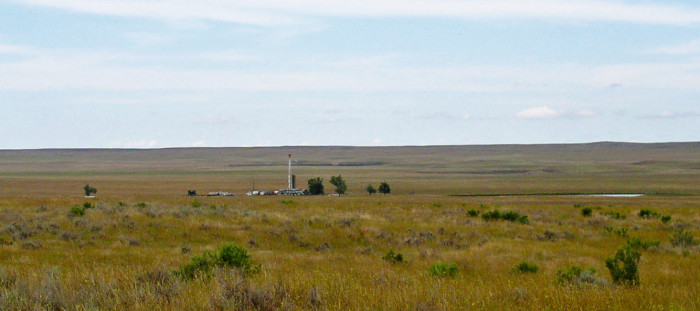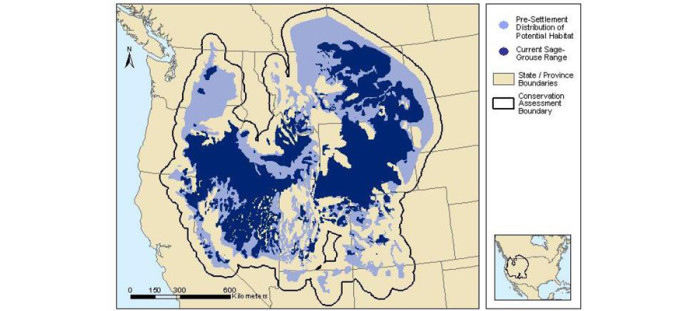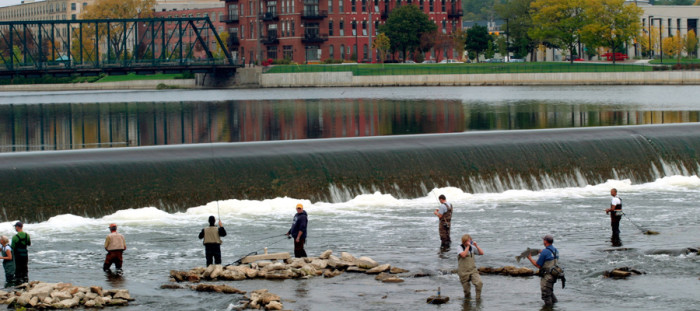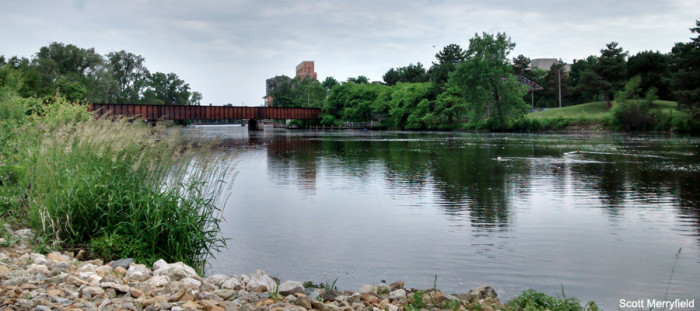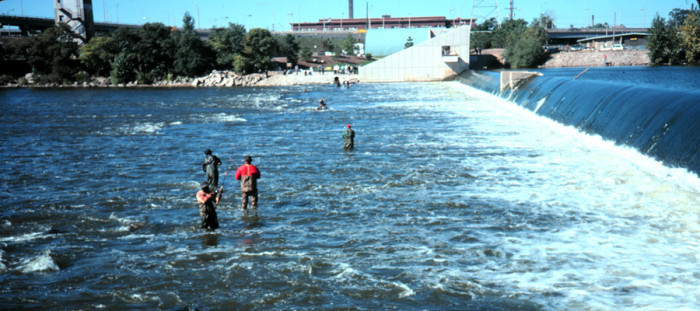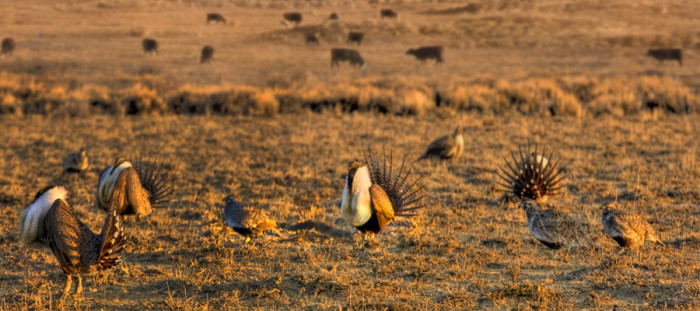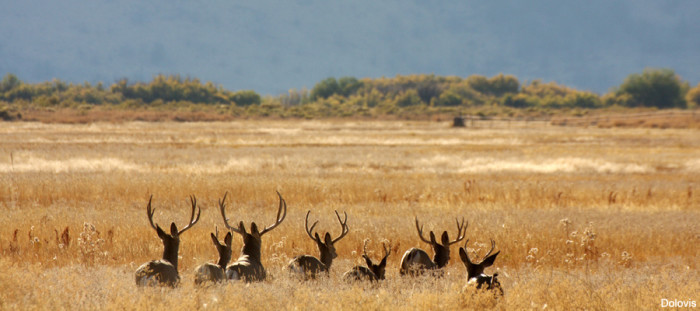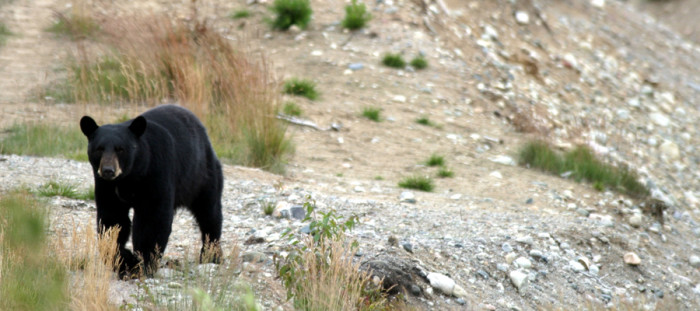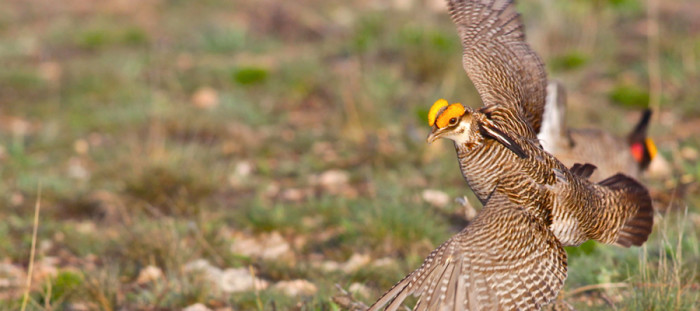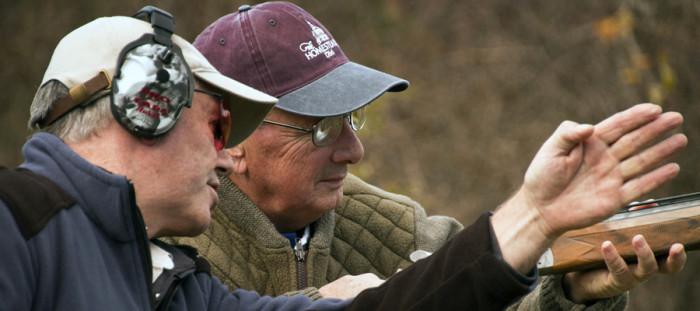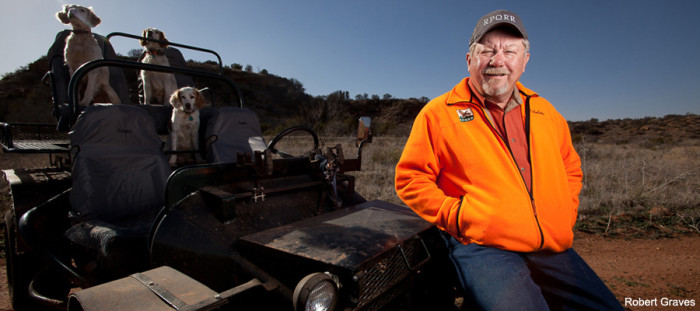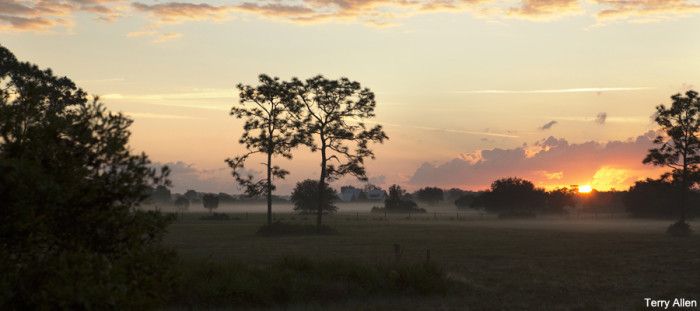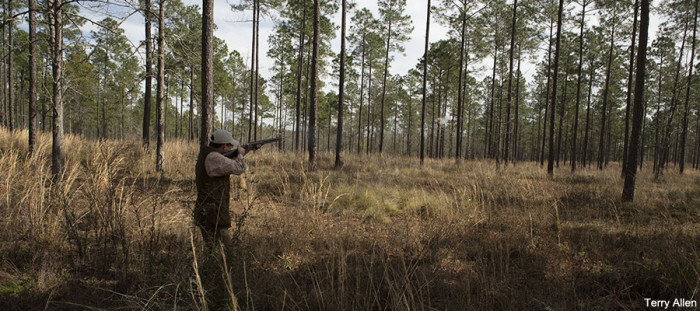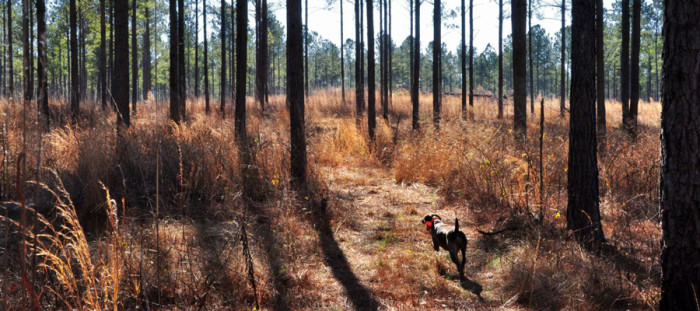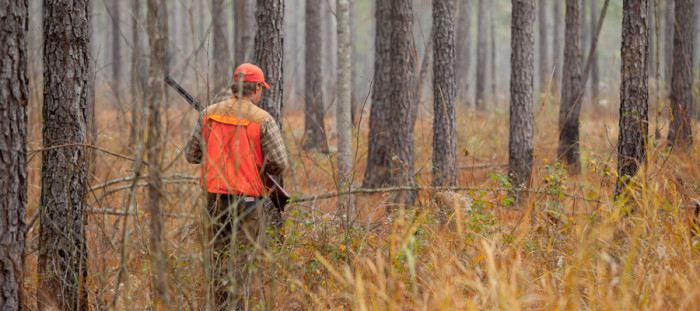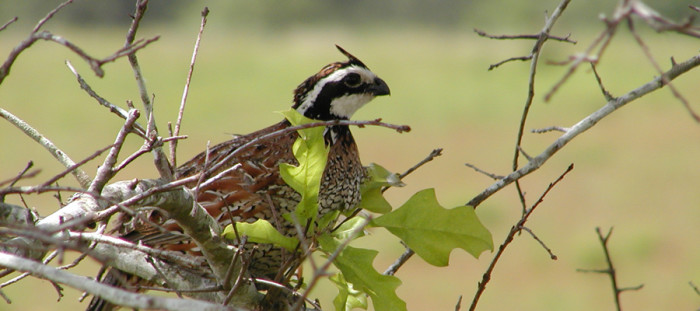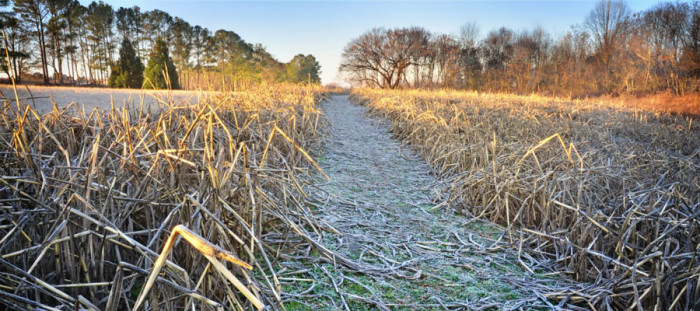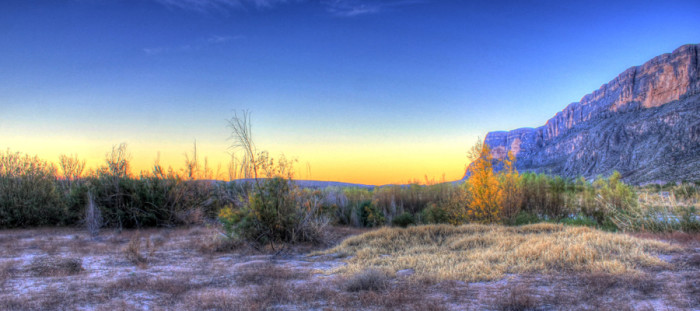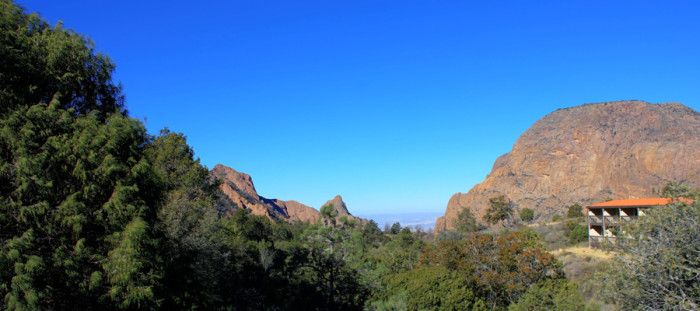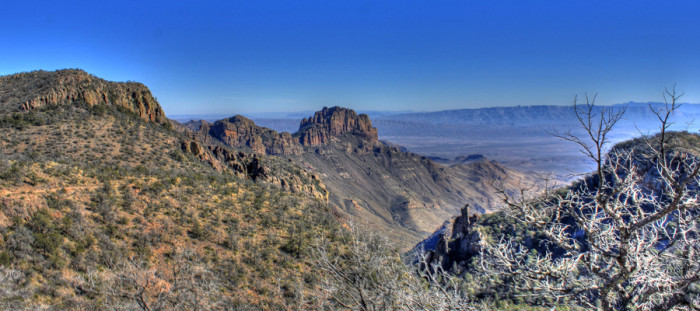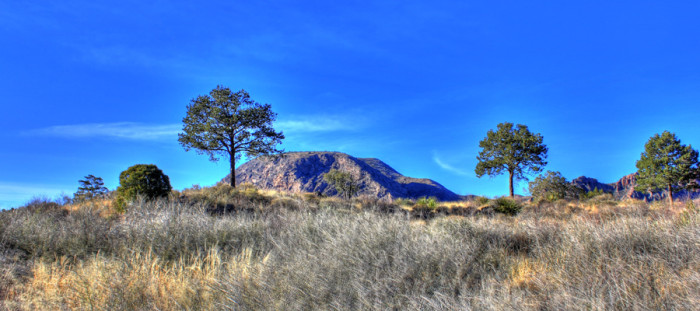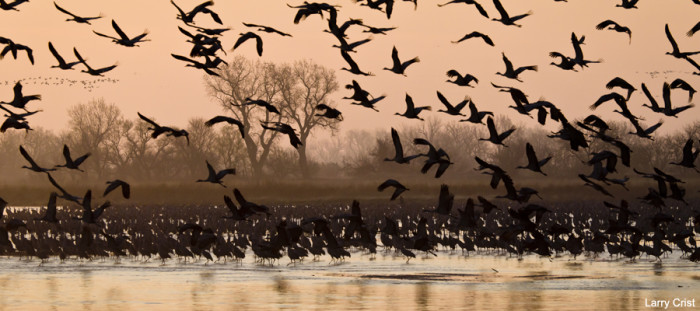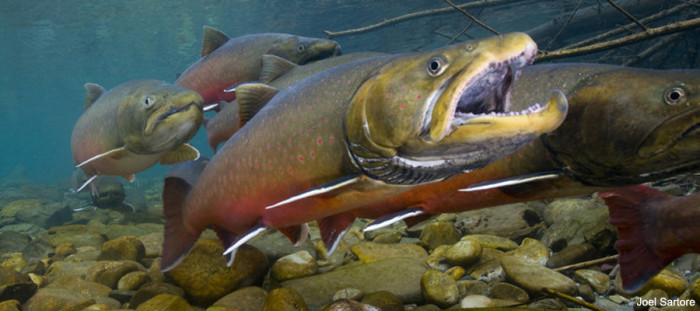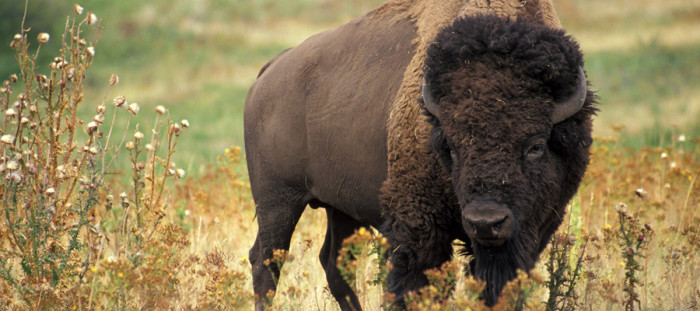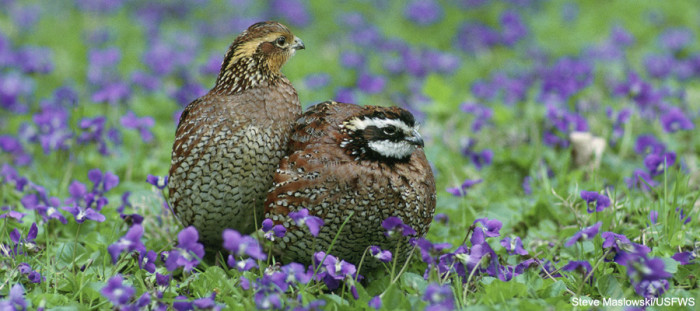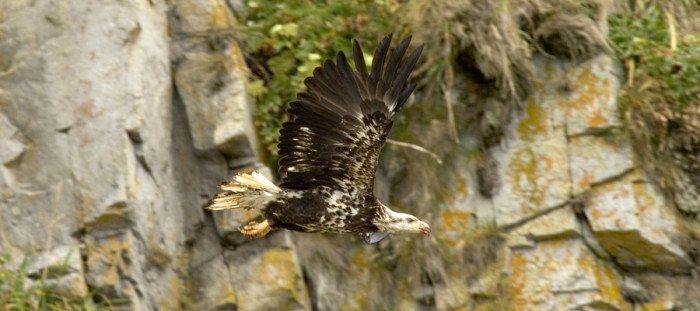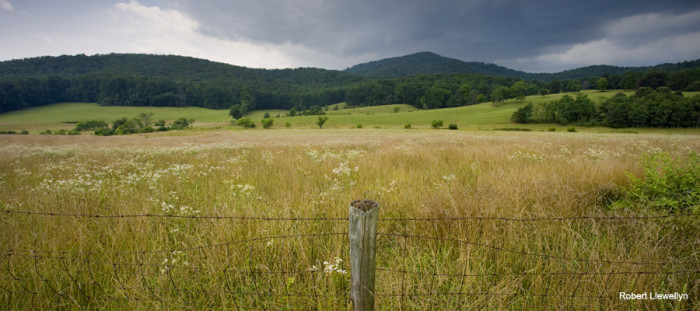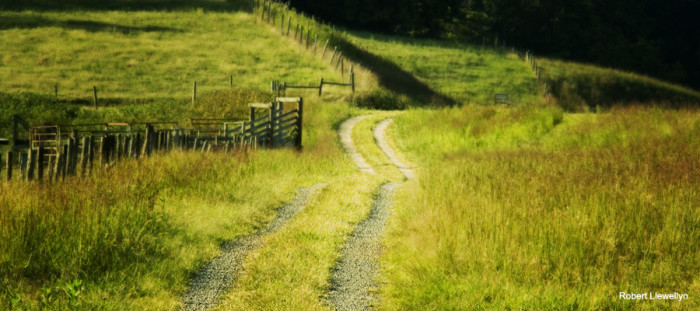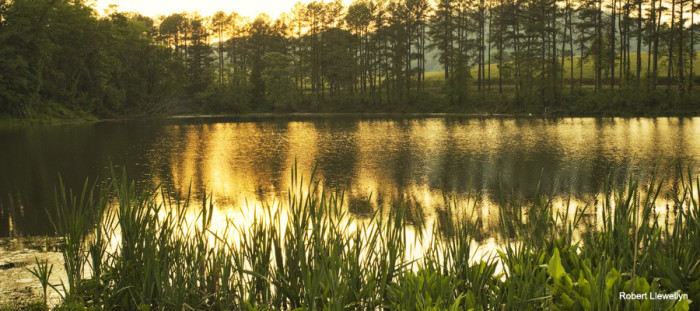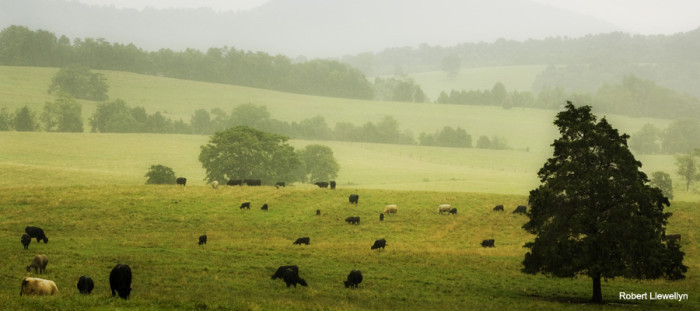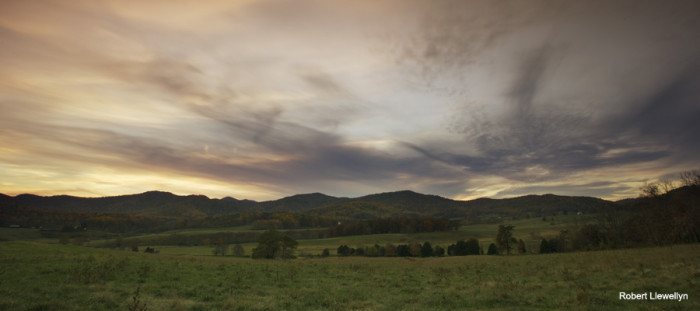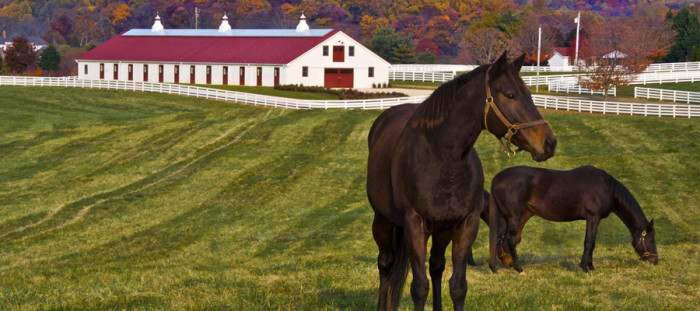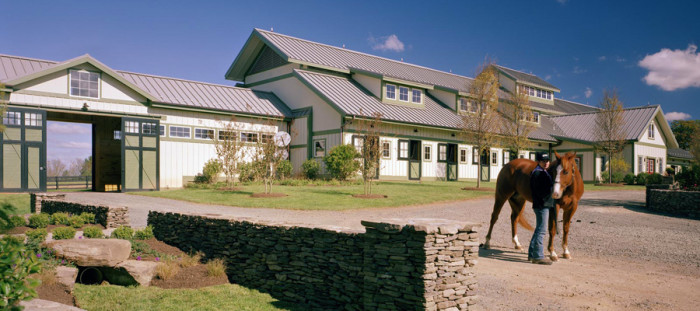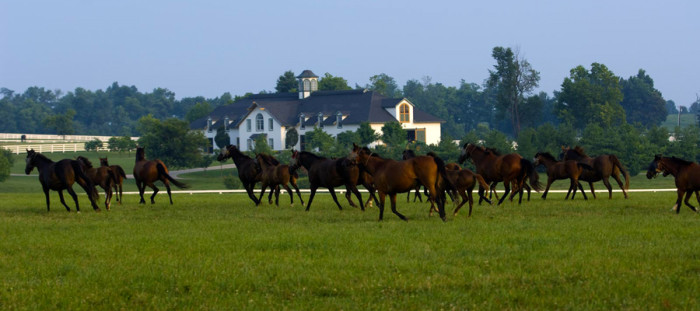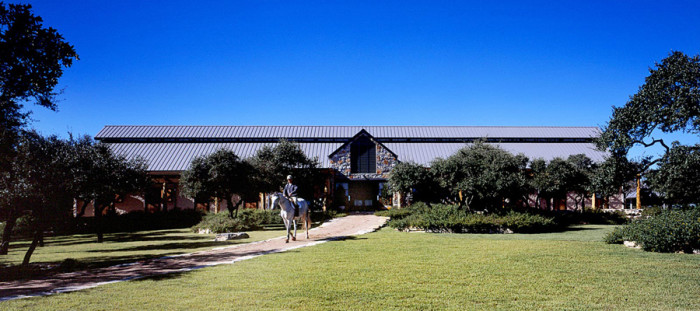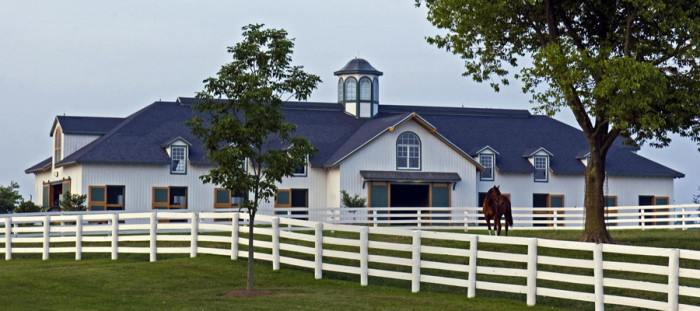We are pleased to pass along the following article from the Sage Grouse Initiative.
Rancher Ron Steineke makes water delivery and grazing improvements that benefit his cattle along with sage grouse and other wildlife.
Drought can be tough on wildlife and cattle in the northwest corner of South Dakota and on the fringe of sage grouse range. When a period of little rain hit the region in 2012, creeks and small reservoirs dried up. Today, with new funds from the Sage Grouse Initiative that help improve grazing systems, rancher Ron Steineke will at last have a reliable water source for livestock and great habitat too.
Dollars and Cents
Steineke is an avid upland bird and pheasant hunter, and he enjoys seeing quite a few white-tailed deer and antelope on the ranch. “I’m kind of a nature guy,” he says. “I don’t mind giving a little, but everything still comes down to dollars and cents.”
Today, Steineke runs about 1,000 head of cattle on a mix of 11,500 acres of private, state and Bureau of Land Management property on the rolling prairie in western South Dakota. His ranch shelters sage grouse and is important for nesting birds, especially on the western edge, close to a lek, where male grouse display and mate with hens each spring.
In a dry year, Steineke might have enough grass to get by, but without a water source near the feed, it’s difficult. “There are times when we have grass that we can use, but without water, we can’t use it,” Steineke says.
Under the Sage Grouse Initiative program, Steineke made a bold move to drill a 3,500-foot-deep water well with cost-share assistance to improve livestock and wildlife management on the large ranch. He’s also building 19 miles of pipeline to deliver water to multiple cattle pastures on the ranch.
Launched in 2010 by the Natural Resources Conservation Service, the Sage Grouse Initiative works to improve habitat on private ranchlands in 11 western states. Many of the SGI contracts with ranchers include provisions to improve the management of livestock grazing so that it’s sustainable over the long-term. The SGI motto is “Wildlife Conservation Through Sustainable Ranching.”
Water is what makes it all work
The water improvements add value to Steineke’s ranch and allow his cattle to move through a new prescribed grazing system that keeps the cows spread out throughout the year. The water developments also will benefit sage grouse, songbirds and other wildlife species that frequent the ranch.
“Water is what makes the grazing rotation work,” says Mitch Faulkner, NRCS rangeland specialist in Belle Fourche, S.D. “Prior to drilling the well, the landowner relied on surface water sources such as ponds, reservoirs and riparian areas that can go dry during a drought period.”
Steineke had an existing well prior to drilling the new one, but it wasn’t very reliable. The big expense of drilling a deep well and pipeline system—about $500,000—was tough to swallow, Steineke says, but the cost-share funds made it doable.
“It’s hard to spend that kind of money to put in the well and the pipeline, but that’s going to improve the ranch,” Steineke says. “In dry years, the water can get very stagnant and the calves won’t drink it. Now they’ll do so much better on clean water, and it’ll add to their growth.”
Grazing rotation is a good thing
The grazing plan calls for cross-fencing, to create an 11-pasture deferred grazing system, along with the new water pipelines delivering water to cattle troughs in all of the pastures.
Via the new grazing system, Steineke will reduce stocking levels from 1,000 cattle to about 750 head.
“The grazing rotation is a good thing—I’ve never done that before,” Steineke says. “I won’t be able to run as many cattle as I used to, but the grass will be better and thicker. We’ll know a lot more in three to four years, but I think there will be all kinds of extra grass out there for sage grouse and other wildlife.”
To make the deferred-rotation grazing system work, Steineke is installing approximately 3.5 miles of fencing to create the new pastures. Many of the new fences split old pastures in two. The mix of state and BLM land is managed as a whole with the private land, so the prescribed grazing system extends to management on state and BLM lands as well. To meet federal guidelines, the BLM completed an environmental assessment on the fencing and water improvements and approved them.
On the western boundary of Steineke’s property, special fence-markers will be placed on the top wire of 5,300 feet of fencing to prevent sage grouse collisions. The fence-markers show up in SGI projects across the West to make the top wire of fencing more visible. University of Idaho graduate student Bryan Stevens discovered two years ago that sage grouse collisions with barbed-wire fences were a significant source of mortality. Marking high-risk fences can reduce deaths by 83 percent.
The west side of Steineke’s property “is close to a lek,” Faulkner says. So the fence-markers will make the fencing more visible when sage grouse move in and out of the rancher’s private lands. “That’s a threat we had to address,” he said.
For more of this article and to learn more on the subject, visit http://www.sagegrouseinitiative.com/south-dakota-rancher-adds-value-operation-improves-wildlife-habitat/
About the Author: Steve Stuebner (@SteveStuebner) is a longtime journalist based in Boise, Idaho. He is also the author/producer of stories for Life on the Range.
We wanted to pass along the following post from our friends at The Conservation Fund.
More than two dozen NGOs including conservation and outdoor recreation organizations have announced their endorsement for the Urban Water Federal Partnership, a collaboration of 14 federal agencies that aims to boost local economies and create jobs by restoring waterways and their surrounding communities.
The announcement came as agency leaders, mayors, non-profits and others working with the Partnership convened in the nation’s capital to share best practices from 18 current Urban Waters project locations across the country.
The collective NGO and association partners have pledged to align resources, funding and expertise to restore urban waters, parks and greenspaces; increase outdoor recreation; engage youth and residents at pilot sites; and create new initiatives or projects nationally or at the state or local levels that achieve complementary results. They will also be assisting federal agency partners with outreach and communications encouraging urban waters restoration, parks and greenspace conservation and outdoor recreation.
“This broad public and private Partnership is vital for ensuring the quality and quantity of our nation’s urban water resources,” said The Conservation Fund’s CEO, Larry Selzer. “In addition, as the vast majority of Americans now live in cities, these restored watersheds are critical gateways for reconnecting young people with the outdoors. Looking forward, we will need all hands-on-deck to restore our nation’s urban waters so these precious resources can help present and future generations thrive.”
In addition to The Conservation Fund, The Nature Conservancy, The Trust for Public Land, City Parks Alliance, Sierra Club and American Planning Association, 21 other NGOs have signed the pledge.
“We are very grateful for the support and partnership that these important organizations will be bringing to our efforts to restore urban waterways,” said EPA Administrator Gina McCarthy. “Community led revitalization is central to the success of the Urban Waters Federal Partnership and these organizations have deep roots in cities across the country, which will enhance and accelerate our collective work.”
In addition to EPA, the Urban Water Federal Partnership also includes the White House Council on Environmental Quality, the U.S. Department of the Interior, the U.S. Department of Agriculture (USDA), the U.S. Department of Housing and Urban Development (HUD) and nine other federal partners.
Launched in 2011, the Partnership provides grants, resources and expertise to local governments looking to restore urban rivers and jumpstart local economies, particularly in underserved communities. This support rejuvenates local communities by restoring habitat, providing outdoor education for youth and improving access to waterfront areas for both business and recreational uses. These enhancements improve public health while bolstering property values and local businesses.
“Today, 80% of Americans live in urban areas, so it is a great idea to focus on how rivers and streams flowing through cities can be improved and used by the millions of people who live near them. As an organization whose mission to protect land for people and provide parks, we support the Administration’s effort in this long-neglected area and are pleased to be working with federal, state, local and private partners in cities that are part of the Urban Waters Partnership,” said Will Rogers, President of The Trust for Public Land.
The Bronx and Harlem River watersheds in New York, for example, pose the challenge of reconnecting communities to their waterways and enabling them to improve health conditions and benefit recreationally and economically. Eight federal agencies, four city and state agencies, community board representatives, and members of the Harlem River Working Group are involved.
The Interior Department, EPA and New York State Parks kicked off urban waters improvement efforts on the banks of the Harlem River in Roberto Clemente State Park, pledging to work together to revitalize the Bronx and Harlem River corridors. Interior’s National Park Service and EPA also are working closely with New York City and community groups to create a new waterfront greenway along the Bronx side of the Harlem River, connecting the river to neighborhoods.
“Restoring our urban waters, preserving open spaces and providing outdoor recreation opportunities are critical to our cities’ growth, health and sustainability, said Catherine Nagel, Executive Director of City Parks Alliance. “City Parks Alliance is excited about this new partnership that brings together federal agencies, local nonprofits, and local governments to restore our nation’s urban waters.”
“Restoring urban waterways helps re-connect metropolitan residents—youth in particular—to open spaces and a relationship with nature,” said Mike Connor, Deputy Secretary of the Interior. “The Urban Water Federal Partnership is an important part of Interior’s programs to help youth and veterans by creating opportunities for them to restore their waters, parks and greenspaces, and providing them with jobs and, in many cases, a career path for those in distressed areas.”
“We can no longer view nature as something separate and outside of cities,” said Meera Bhat, Director of Urban Strategies for The Nature Conservancy. “Urban areas are home to diverse species, wildlife habitat and important waterways. We must work together to keep cities’ lands and waters healthy so they can provide clean drinking water, outdoor recreation opportunities, jobs and other essential services.”
The Urban Waters and Five-Star Grant program, which currently supports 18 communities in cities of all sizes across the nation, has awarded more than $1.8 million since its inception, with grantees leveraging an additional $6.7 million in local project support. The RFP was issued in November and closes February 5, 2015.
The grant recipients are tackling some of their communities’ foremost challenges, from improving drinking water quality to promoting economic revitalization. This cross-sector engagement with local groups ensures community-based solutions best tailored to the local environment.
“We’re proud to be a part of this community-driven partnership to restore and protect urban waterways. Together we will help open the door for more families to explore and enjoy the outdoors,” said Michael Brune, Sierra Club Executive Director.
“Most cities in America, from large urban areas to small rural communities, have these important waterway resources. Many places were originally settled because of them,” said William Anderson, FAICP, President of the American Planning Association. “To restore waterways for habitat, water quality, and storm protection, while planning their use for recreation, contribution to public health, connections to culture, and value to economic development is a tremendous opportunity.”
For more information visit http://www.urbanwaters.gov.
The following post comes from Ariel Wiegard at the Theodore Roosevelt Conservation Partnership (TRCP).
Just before Thanksgiving, the U.S. Department of Agriculture quietly announced an additional 86,000 SAFE acres across seven states: Georgia, Idaho, Indiana, Kansas, Minnesota, North Dakota and South Dakota. These acres are a boon to private landowners and sportsmen. But I’d wager that most hunters and anglers, and probably many farmers and ranchers, don’t know what SAFE is or just how beneficial the program can be.
For the unfamiliar, SAFE— State Acres For Wildlife Enhancement —is part of the USDA’s Conservation Reserve Program, or CRP. The general CRP asks landowners to voluntarily conserve large tracts of previously cropped land to achieve a wide range of environmental benefits. As a part of CRP, SAFE is also a voluntary land conservation program, but here USDA works with landowners, state and federal agencies, non-profit organizations and the public to identify strategic projects that conserve land in specific parts of the country. SAFE distinctively focuses on habitat for species that are threatened or endangered, have suffered significant population declines or are considered to be socially or economically valuable.
That last phrase, “socially or economically valuable,” is key for sportsmen. SAFE authorizes your local decision makers to identify which acres will best target the needs of “high-value” wildlife, and that includes for hunting and fishing. SAFE projects have provided habitat for the plains sharp-tailed grouse, sage grouse, American woodcock, northern bobwhite quail, ring-necked pheasant, a wide variety of waterfowl, cottontail rabbits, black bears, mule deer, elk, salmon, steelhead trout and many other species, across 36 states and in Puerto Rico. That’s nothing to shake a tail at.
Landowners can benefit from SAFE too especially at a time when crop prices are low and land prices are high. USDA offers a signing incentive of $100 per acre to landowners who convert idle cropland into SAFE; pays landowners up to 90 percent of the cost of planting trees, forbs and grasses that benefit wildlife; and provides guaranteed rental payments on that land for the length of a contract, usually for 10 to 15 years. SAFE can improve farm income while incentivizing on-the-ground practices that benefit our favorite critters on an ecosystem-wide scale.
Although the extra 86,000 acres comprise only a fraction of the 24 million acres enrolled in CRP, at the TRCP we were thrilled by USDA’s announcement. Since SAFE’s introduction in 2007, many states have maxed out their allotted acres and maintain waiting lists for landowners hoping to enroll stream buffers, restored wetlands, newly seeded grasslands and longleaf pine stands in the program. The TRCP welcomes any additional chances to provide habitat for fish and wildlife and access for sportsmen.
Landowners can enroll qualified acres in a designated wildlife project in their state at any time. We especially encourage those in the seven states listed above to take advantage of this new opportunity. For more information, visit http://www.fsa.usda.gov/conservation or visit a local USDA office.
Ariel Wiegard is the director for the Theodore Roosevelt Conservation Partnership’s Center for Agriculture and Private Lands. The TRCP is working every day to guarantee you a place to hunt and fish. To learn more, visit www.trcp.org.
The Coordinated Shooting Method (CSM) was developed by John Higgins (a Field Sport Concepts affiliate since 1998) and Rhonda Young to offer students an alternative to the rigid methodologies that have always dominated shotgun shooting education. CSM is a formative method, based on a more recreational philosophy and teaching style. It has been designed to help each student discover, define and develop their own shooting style by teaching them how to learn and moves away from the performance based expert driven teaching style that focused on deficits rather than the building of knowledge and skills. The end result is that students learn how to develop their skills in a way that is most appropriate for them, allowing them to become more confident and successful instructors and students. CSM is student centered teaching which focuses on developing the students’ abilities and encourages them to become active participants in the learning process, all of which is achieved by the instructor playing a supporting role in the process rather than directing it.
CSM focuses on the six fundamental elements of shooting. These are: focus, sight picture, alignment, timing, coordination and perception. Only by developing a strong understanding of the fundamentals and then learning how to apply them, can a student dramatically improve shooting abilities and put him/herself on a fast track to sporting clays success.
CSM Founder John Higgins also designs world class sporting clays courses, as one of the many services available from the affiliates at Field Sport Concepts. This along with land planning and design, equestrian architecture, stream restoration and many other services offers opportunities for increasing the enjoyment and long-term value of your land. For more information about the Coordinated Shooting Method contact John Higgins at jchiggins@reagan.com or 912-656-1589, or if you are interested in learning more about how the Field Sport Affiliates can assist you in the design and planning for your property contact Bob McKee at rmckee@fieldsport.com or 434-979-3846.
SOUTHERN EXPOSURE is a film series from our friends at the Southern Environmental Law Center about Alabama’s incredible natural resources and important environmental issues that impact all of us.
When it comes to natural landscapes, Alabama has it all: Southern Appalachian forests, world-class rivers, ancient cypress swamps, white sandy beaches, and much more. Alabama’s incredible geographic variety and natural resources supports a stunning array of species – some found nowhere else on Earth.
Now in its third year, this innovative summer fellowship brings emerging filmmakers from across the country to tell authentic, engaging stories about Alabama’s environment and the people who cherish it, from the mountains to the coast.
Although the majority of the screenings have already occurred you can visit the SELC’s webpage for the Southern Exposure Film Series to check out extended previews of the films and for information on their January 27th, 2015 screening. Also, to learn more about the fellowship or to apply to be a fellow, email SELC at southernexposure@selcal.org or visit them on Facebook.
We wanted to pass along a story written by Ray Sasser for our good friends at Covey Rise about the work that Dale Rollins has undertaken to help quail survive and thrive.
Dale Rollins figures he drove about a million miles in his career as an extension service biologist for the Texas A&M University system, what’s now called Texas AgriLife. Most of his trips were down seemingly endless West Texas highways. One December day in 1992, Rollins presented a program to the San Angelo Lion’s Club, and then headed for Childress (220 miles away) to talk with 4-H leaders. Along the way, he had an epiphany.
“As I drove along a lonely stretch of U.S. 83 between Aspermont and Guthrie, I contemplated that I could give such programs every day if I had the time and energy,” Rollins recalls. “Few of the programs required a PhD in wildlife management. I began mulling the idea of empowering youth as ambassadors for conservation awareness and the term ‘Bobwhite Brigade’ popped into my head.”
With the help of like-minded wildlife volunteers (and for the record, Rollins does have a PhD in wildlife management), Rollins organized the Bobwhite Brigade, a program that’s expanded to Texas Youth Brigades. The intense camps, usually held on large ranches, attract kids interested in quail, white-tailed deer, waterfowl, bass, and, new this year, ranch management for livestock. In 2014, seven Brigades are scheduled. Families who can’t afford the tuition can seek financial assistance.
About 2,600 “cadets” have already learned what it takes to maintain healthy fish and wildlife populations. Their calling is to spread that information far and wide. The serious cadets get it done, document their work, and are promoted to company commanders the next season. It’s hard work, but Rollins and his crew make it fun, using water guns to awaken exhausted cadets who fall asleep during presentations, playing the wildlife equivalent of Jeopardy (complete with theme music), learning in innovative ways how and why quail survive—and why they don’t.
Cadets also learn what are called “silver bullets,” bits of commonsense logic that go far beyond wildlife management. Rollins’ personal favorite is the anonymous quote: “I had no shoes, and I complained, until I met a man who had no feet.”
“What it means to me is not to wallow in self-pity,” he says. “You don’t have to look far to find someone with a much tougher row to hoe than you have—so man up and get to work.”
According to Rick Snipes, president of the Board of Directors of the Rolling Plains Quail Research Ranch, Rollins has made many friends through the years. “By establishing, inspiring, and running the Bobwhite Brigade program, Dale has built his personal stairway to heaven,” says Snipes, a North Carolina native who owns and operates a West Texas ranch that’s managed just for quail. “Dale can relate to most of the quail-hunting stakeholders. As much as any of us, he has a deep and abiding interest in the sport of quail hunting.”
Raised in southwest Oklahoma, Rollins blends humor, common sense, and intellect into something of a cross between Will Rogers and Aldo Leopold. He was hooked on quail at age five when he first heard the signature “bob white” whistle and he can take you with GPS precision to the spot where he shot his first bird on the wing.
“I’m so thankful I was raised where hunting opportunities from quail to jackrabbits were almost unlimited and where BB guns, .22s, .410s, and Remington Model 870 Wingmasters were rites of passage,” he says.
Rollins learned early on that theoretical biology wasn’t the same as practical biology. “One misconception upon graduating with a PhD from Texas Tech in 1983 was that the bulk of my time would be spent disseminating new research results from my colleagues to the ‘common folks on the back forty.’ In reality, I’ve learned more from dedicated landowners, and then cut and pasted their ideas to share with my biologist peers.”
There’s a silver bullet for that, a quote attributed to Benjamin Franklin: “Every man I meet is in some way my superior, and if I will listen to him, I can learn from him.”
Rollins says he was increasingly dissatisfied with the lack of what he calls “extendable research” being generated by A&M colleagues so he sought and received a partial research appointment in 1989 and began looking at quail issues in West Texas. In 2007, Rollins’ research efforts led to a generous donation by the Mellon Foundation to buy the Rolling Plains Quail Research Ranch (RPQRR). The ranch was purchased with a grant from The Conservation Fund and then the deed transferred to the newly created Rolling Plains Quail Research Foundation in 2007. The Foundation is managed by a six-man board (all Texas quail hunters) with Rick Snipes of Aspermont serving as its president. The ranch covers 4,270 acres in Fisher County, once the most prolific quail county in all of Texas.
Rollins retired from AgriLife in 2013 and was rehired to head up their Reversing the Decline of Quail initiative. It’s what he calls his part-time job. His full-time job is executive director of RPQRR. It seems like covey-rise kismet that the same year the RPQRR was founded, a group of Dallas volunteers led by Joe Crafton held the first Park Cities Quail (PCQ) fundraiser. In PCQ’s second year, the group selected Dallas businessman T. Boone Pickens to receive its Lifetime Sportsman Award and named the award for him. Pickens is a lifelong bird hunter and a self-made billionaire. A business writer once asked him when he first knew he was rich. Without hesitation, Pickens answered that he knew he was rich when he realized he owned 30 bird dogs. His Mesa Vista Ranch in Roberts County, Texas, is one of the state’s best quail properties.
PCQ adopted RPQRR and funds its annual budget. People in Texas are serious about their quail, and the annual PCQ fund-raiser generates more money than the research ranch spends. In 2014, the fund-raiser—a dinner and live auction—set attendance records of 1,100 and net proceeds of $1,005,000. All the money goes to quail research and conservation. Any valid research program can make a grant application. Through 2014, PCQ will have raised and spent $4.5 million on Texas quail programs.
As usual, at the 2014 event, Pickens donated an exclusive quail hunt for six couples to Mesa Vista. For the third consecutive year, it sold to Dallas businessman Carl Allen. He paid $150,000 for the privilege. Pickens himself paid $125,000 for VIP passes to George Strait’s final concert. Strait received the 2014 Lifetime Sportsman Award. Videos of the event are online at parkcitiesquail.com.
“The support of PCQ in general and T. Boone Pickens in particular has literally been the wind under our wings,” says Rollins. “We (RPQRR) were fortunate to be hatched about the same time. They were looking for a cause and we were looking for a dedicated partner. It’s a marriage made in quail heaven. Boone’s influence has provided money and a showcase in Mesa Vista Ranch for what quail management can be. Having a man of his means and affection for quail as a pacesetter and spokesman is a tremendous asset for quail folks.”
Rollins hunts from a dune buggy with his dogs loose in the backseat. When he finds a spot that looks good to him, he stops the vehicle and, without even looking at the dogs, announces, “I need a volunteer.” Whether bird dogs, Bobwhite Brigade teachers and cadets, conservation funds, or fund-raising machines like PCQ, volunteers are anxious to work for a man who leads by example.
We would like to thank Covey Rise for allowing us to share this full published story with our subscribers. To check out previews of other great articles and some truly beautiful photography visit their website and consider subscribing to Covey Rise a magazine devoted to the upland sporting lifestyle (www.coveyrisemagazine.com).
This article was written by Patrick Reznik, Attorney at Braun & Gresham, PLLC an Austin, Texas-based law firm affiliated with our friends at Plateau Land & Wildlife Management.
As Texas continues to grow its infrastructure across the state’s private rural lands, potential litigation related to old easements is becoming a more serious issue. Buyers of rural land often fail to identify the existence of “unmaintained,” but legal “blanket” easements in the title commitments. Blanket easements may allow the company to use the whole property for its purposes. This can leave landowners vulnerable to the legal rights of oil and gas pipeline companies or electric utilities that may decide to upgrade, maintain or construct new facilities on the land after decades of inactivity.
Some of my clients recently came home from work to discover that a pipeline company had cleared more than a 100-foot wide strip of old growth trees directly in front of their home. They chose this property because of the beautiful view. The company said it needed to “maintain” its easement and install some corrosion control devices, which it never installed. Understandably, these landowners believe their land has been seriously devalued.
Purchasing land is a serious investment. Thus, fully understanding the liabilities associated with the purchase of a property is essential. These old easements are generally listed as exceptions to the title policy. The buyer should request these documents from their title company and carefully review the language with an attorney. Without careful review, a buyer may not realize a permanent easement exists under the old growth of an oak grove which was part of what incentivized the buyer to purchase this particular property in the first place. This could surface as a serious liability to the value of the property. Especially, if a company, without advanced notice to the landowner, decides to maintain or construct on its old easement by cutting down all those trees.
In a separate case, and without notice to the landowner, a company cleared multiple 50-year-old native oak trees along a 75 foot wide strip in order to install an additional pipeline. To the owners’ amazement, the old easement called for paying only “twenty-five cents per lineal rod”! In both of these cases, the companies had blanket easements on the properties, and the owners were not aware of the old easements when they purchased the properties.
In certain circumstances, for pipe laid under the threat of eminent domain prior to January 1, 1994, Texas law limits the width of pipeline easements to 50 feet. Pipeline companies who clear beyond those 50 feet may be subject to a valid lawsuit and be responsible for monetary damages.
By reviewing the current easements on a property, Braun & Gresham, PLLC has helped landowners identify the current liabilities and their legal impacts, as well as provided sound advice on whether better terms may be negotiated with the easement owner. We recently re-negotiated an old blanket easement to define the exact location and width of a pipeline easement, protecting the rest of the property from the blanket easement. We have also recently helped a landowner convince the title company, who argued a telephone easement was a blanket easement, to remove it from its exceptions to the title policy.
Regardless of whether you recently purchased your property or it has been in the family for 100 years, it is important to understand the easements that impact your land and its value. Understanding your property rights also applies to newly negotiated easements that will likely last for many future generations. With the assistance of an attorney, you or future owners may be able to avoid unwanted litigation or the heartbreak of losing one of your favorite features on the property.
Johnny Morris, founder and CEO of Bass Pro Shops, and former Wyoming governor, Dave Freudenthal today named 20 members of the national Blue Ribbon Panel on Sustaining America’s Diverse Fish and Wildlife Resources. Morris and Freudentahl, the Blue Ribbon Panel co-chairs, made their announcement during a keynote address at the 2014 Annual Meeting of the Association of Fish & Wildlife Agencies in St. Louis, Missouri.
The Blue Ribbon Panel represents the outdoor recreation retail and manufacturing sector, the energy and automotive industries, private landowners, educational institutions, conservation organizations, sportsmen’s groups and state fish and wildlife agencies. The Panelists will work together over the course of a year to produce recommendations and policy options on the most sustainable and equitable model to fund conservation of the full array of fish and wildlife species.
“Conservation means balancing the sustainability of fish and wildlife with the many needs of humans for clean air and water; land; food and fiber; dependable energy; economic development and recreation,” said Morris. “By assembling this Panel of highly regarded leaders and problem solvers, we will find a way forward that safeguards not only vital natural resources, but also our nation’s economic prosperity and outdoor heritage.”
“With fish and wildlife species and natural resource-based enterprise at stake, we can’t afford an ‘us vs. them’ mentality,” said Freudenthal. “It is time to create certainty for both industry and the conservation community by building a 21st century funding model.”
State hunting and fishing license dollars, federal excise taxes on hunting and fishing gear and motorboat fuel taxes have provided the backbone for funding states’ fish and wildlife conservation programs over the past century. However, there has always been a significant gap in dedicated funding for conserving the 95 percent of all species that are neither hunted nor fished.
Only partially filling that gap is the State and Tribal Wildlife Grants Program, the sole federal source of funding to state agencies to prevent new endangered species listings. Since 2010, the program’s funding has been cut by more than 35 percent while petitions for federal endangered species listing has skyrocketed by 1,000 percent.
“Dedicated funding allowing for the management of all fish and wildlife, whether game or non-game species, is essential for this nation,” said Bob Ziehmer, Missouri Department of Conservation director and representative for state fish and wildlife agencies on the Blue Ribbon Panel. “Many species are declining in abundance and will continue to do so if we don’t work toward establishing a sustainable funding source for our nation now and into the future.”
The Association of Fish & Wildlife Agencies began its quest to secure sustained funding for fish and wildlife diversity conservation in the early 1990s. The launch of the Teaming With Wildlife coalition, which now includes nearly 6,400 organizations, was a critical step in demonstrating broad and diverse support for dedicated fish and wildlife funding.
The co-chairs expect to add approximately three more individuals and four Ex Officio participants to the Panel before it convenes its first meeting in early 2015.
To learn more about AFWA’s Blue Ribbon Panel on Sustaining America’s Fish and Wildlife Resources, go to www.fishwildlife.org/blueribbonpanel.
2014 saw the long awaited passage of the Farm Bill, which had been stalled for the previous two years in Congress. While not a completely satisfactory agreement for any one group, it marks a rare bipartisan compromise and is worth learning more about as a landowner, outdoor sporting enthusiast, and/or environmentalist.
While the title “Farm Bill,” may not seem explicitly conservation based- this legislation has been the greatest source of private land conservation funding in the United States and promoted vast improvements in land protection and management. A letter sent to the majority leaders and signed by some 230 organizations including the Nature Conservancy, The Wildlife Society, Ducks Unlimited, and the National Wildlife Federation said “it funds programs that improve air and water quality, recharge groundwater aquifers, and create fish and wildlife habitat, thereby providing meaningful benefits to all Americans and taxpayers. Not only do Farm Bill conservation programs play a key role in supporting clean air, clean water and productive soils, they also help producers avoid unnecessary regulation and promote our nation’s long-term economic and food security.”
But what exactly are these measures and how can a landowner go about utilizing them?
There are three main ways that the Farm Bill provides support to landowners.
– Financial Assistance: The farm bill provides funding for landowners through the Environmental Quality Incentives Program (EQIP), the Conservation Stewardship Program (CSP), and the Agricultural Management Assistance Program (AMA). The EQIP helps landowners improve water and air quality, conserve water, reduce erosion, and create, protect, or improve habitat through financial and technical assistance. The CSP pays landowners for their responsible land-management, with higher payments to the higher performers. Finally, the AMA Program helps landowners to construct or improve water management, plant trees, incorporate or advance conservation practices, and even transition to organic farming.
– Easement Programs: The Agricultural Conservation Easement Program (ACEP) combines the former Farm and Ranch Lands Protection Program, Grasslands Reserve Program, and Wetlands Reserve Program. The financial assistance and easements are created to help farmers maintain productive lands, conserve habitat, and protect US food production rather than converting them to other uses. There are different rules for different land types; in certain cases the Natural Resources Conservation Service may pay up to 75% of market value for agricultural easements, up to 100% of the restoration costs for permanent wetland easements.
– Partnerships: The Regional Conservation Partnership Program (RCPP) was developed to facilitate better conservation assistance to producers. This combines the former Agricultural Water Enhancement Program, the Chesapeake Bay Watershed Program, the Cooperative Conservation Partnership Initiative, and the Great Lakes Basin Program. The partners include agricultural associations, cooperatives, governments, American Indian tribes, water treatment entities, conservation NGO’s, and educational institutions who help with funding, implementing, and reporting on conservation practices.
While these are the main three routes that the Farm Bill funding is delivered, there are other programs such as the Agriculture Conservation Experienced Services Program (ACES), which utilizes older and experienced workers from the non-profit conservation sector to help provide technical assistance and Conservation innovation grants which are competitive grants to facilitate research and pilot-project implementation on farms. One that might be of particular interest to you, land owner or not, is the Voluntary Public Access and Habitat Incentive Program (VPA-HIP), which increases public access to private lands for recreational purposes including hunting, fishing, and hiking. The funding provided can be used to expand or improve habitat that is enrolled in public access programs, and other incentives include rental payments or technical services.
The 2014 Farm Bill marks improvement of the conservation and environmentally responsible agenda while ensuring public access to these great spaces. We would be happy to help you evaluate which programs may be appropriate for your own land and how to go about utilizing these tools. You can find more detailed information here: http://www.nrcs.usda.gov/wps/portal/nrcs/main/national/programs/farmbill/.
This piece written by Field Sport Concepts, Ltd. staff member Macy Anne Carman.
Things to Consider When Purchasing Equine Property
The following comes from Field Sport Concepts affiliate John Blackburn, AIA, Senior Principal at Blackburn Architects, P.C.
If you’re thinking about purchasing property for equine use, the list of what to look for or look out for is virtually limitless. The problems and possibilities are often as obvious as they are exceptionally latent, but regardless, it’s imperative that you identify them early on. I frequently tell my clients, “When approaching the development of an equestrian property, the design is out there. It’s in the property and we just have to find it.” I’d like to address a few key questions that will hopefully give you some direction as you start the process.
1.) How will the property be utilized?
Identifying the ways in which the property will be utilized will narrow down what to look for and what to look out for. Requirements for a residence may differ greatly from those of an equine or event facility, so it’s imperative to have a clear idea of what the property will serve as a foundation for. Establishing a vision for the property early on will help you avoid costly fixes later. You’ll want to investigate any plans for growth development in the area. It may be that the county intends to build a highway or set up a series of retail outlets in the next few years that could potentially be disruptive to your plans for the property. Speak to neighboring property owners to get a feel for the area and learn about the history. Check out local newspapers or go online and read published reports of recent public hearings and local planning meetings. Do your homework!
2.) What are the natural characteristics of the location?
Climate, elevation, weather, weather extremes, seasonal changes, and availability of basic utilities (water, power, sewer, access to roads and vendors) all present challenges when establishing and managing horse property. The natural obstacles faced by a farm in the Northwest vastly differ from those in the Southwest, so it’s important to consider the characteristics of your property’s location. Proper drainage is crucial to any property for the health and safety of the horse. Will run off be an issue? Will you be able to draw water from an existing body of water or will a holding tank be required? How accessible to power and roadways is the property? I recommend retaining the services of a professional local civil engineer who can examine the current conditions and help you determine what you’ll face down the road.
3.) What currently exists?
Find out what assets or limitations come with the property. What is the tax status/classification? Will you be renovating/repurposing existing structures? If so, what condition are they in? Are there man-made restrictions (zoning, covenants, historic preservation status)? Check with the county about what steps would need to be taken to organize the property the way you envision it. Again, do your homework!
4.) Will this property serve my goals?
Whether your goal is to maintain a residence and private equestrian boarding facility or to create an equine-centric business, you must determine if the property is right for your lifestyle and your horse’s well being. If you haven’t already, create a separate budget for property improvements and infrastructure needs as soon as they are identified. Be sure to include pasture preparation and fencing. Are these things feasible given what you’ve learned about the location and property attributes? Create a list of health and safety needs for your horse. Include your own lifestyle needs as well. Would developing this property hinder the fulfillment of any of those needs? Reconsider purchasing if it would. All properties are unique and they can be modified to some degree, but how much time, energy, and money are you willing to spend to mold problematic property? Consult with professionals, such as Blackburn Architects and other Field Sport Concept affiliates, who can help align your goals with what the property has to offer.
For an equine property to be successful it must balance the goals of the owner, the natural demand of the property, and the health, safety and well-being of the horse.
Field Sport Concepts affiliate John Blackburn, AIA, Senior Principal at Blackburn Architects, P.C., author of Healthy Stables By Design has over 35 years of experience in the practice of architecture. His award-winning designs include a full range of project types and services, from programming, existing facility evaluation, and master planning to new construction, adaptive reuse, and historic preservation. To learn more about what to look for when purchasing equine property or ways in which you can improve the value of your existing property contact John Blackburn at jab@blackburnarch.com or Robert McKee at rmckee@fieldsport.com .


